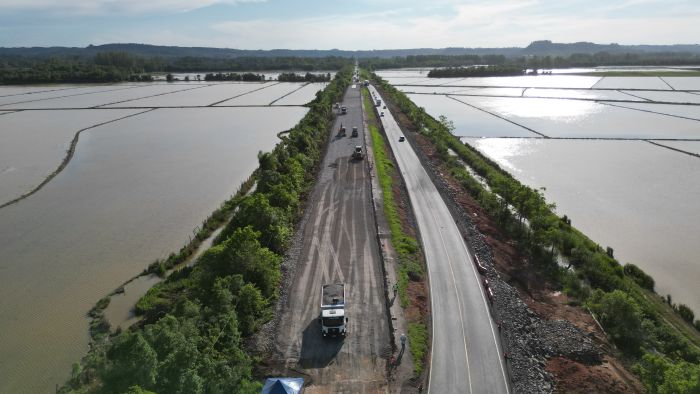Rota de Santa Maria (Sacyr Concesiones) is implementing an innovative high-speed load-control system for trucks on the RSC-287 highway in the State of Rio Grande do Sul (Brazil).
“This is a decisive step toward a smarter, safer, and future-ready roadway,” says the Concessionaire’s CEO, Leandro Conterato.
The new system, known as HS-WIM (High-Speed Weigh-In-Motion), relies on quartz (piezo-quartz) sensor technology—one of the most advanced solutions available today.
Its purpose is to monitor vehicle weight limits automatically. The process does not affect travel speed: weight sensors embedded in the pavement work together with cameras and laser detectors installed on overhead gantries to classify and identify each vehicle.
As vehicles pass under the overhead gates, they are scanned and weighed automatically, providing an instant data readout.
“This technology makes it possible to inspect 100% of freight vehicles, 24 hours a day, with greater efficiency and without disrupting traffic. Beyond helping reduce harmful emissions, it delivers significant gains in sustainability, safety, and logistics competitiveness” the CEO highlights.
HS-WIM represents a major leap compared to traditional weighing stations, which require trucks to slow down or come to a complete stop.
Along with more effective load monitoring, the system brings clear environmental and operational benefits: shorter travel times, fewer accidents, and lower fuel consumption—all of which contribute to reducing atmospheric emissions.
Rota de Santa Maria is developing a calculation tool to estimate the volume of greenhouse gas (GHG) emissions avoided through the implementation of the HS-WIM system.
Construction works for this system are well advanced, and testing is expected to begin in the first quarter of 2026.
About Rota de Santa Maria
Sacyr Concesiones, through the Rota de Santa Maria concessionaire, has been responsible since 2021 for operating 204 km of the RSC-287 highway. Major widening and improvement works are underway, including the duplication of 200 km of road.
This corridor connects the key cities of the central region of Rio Grande do Sul with the state capital, Porto Alegre.
